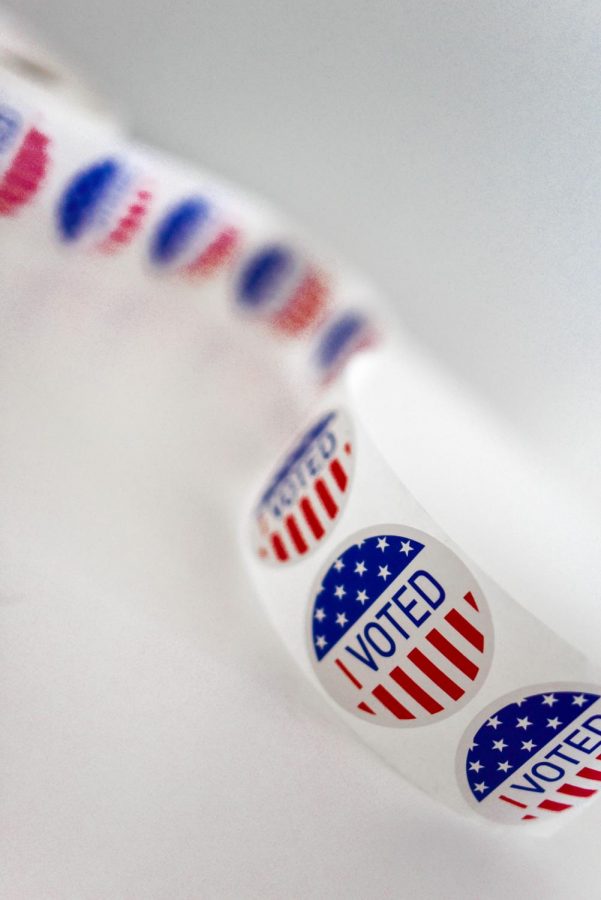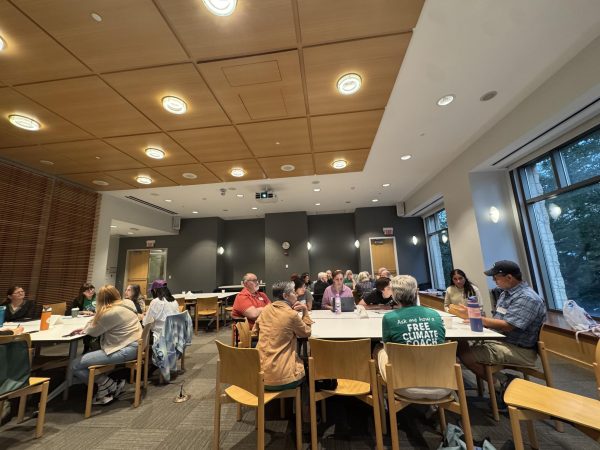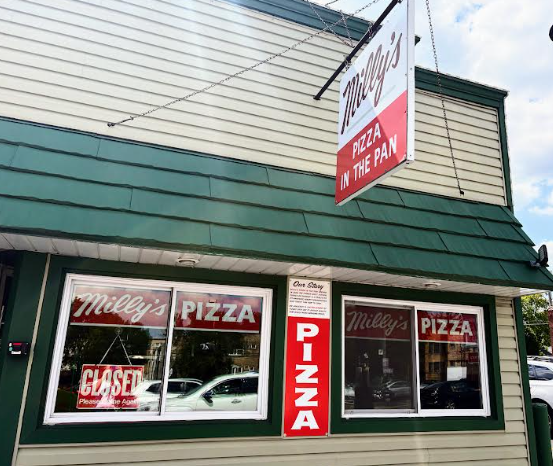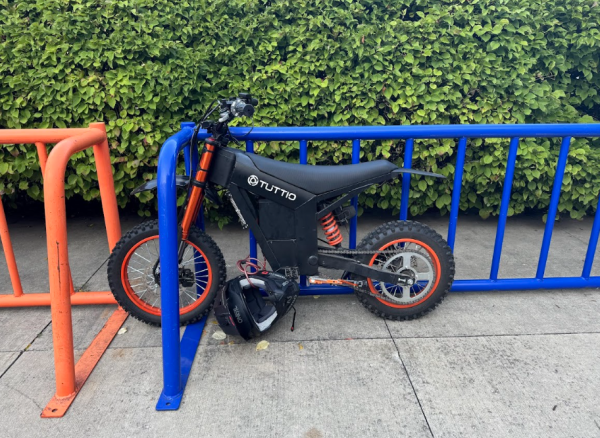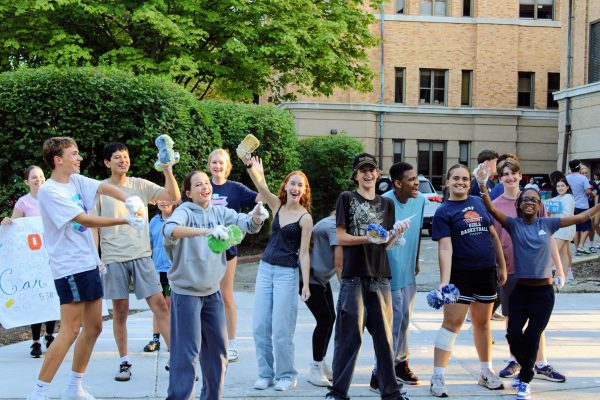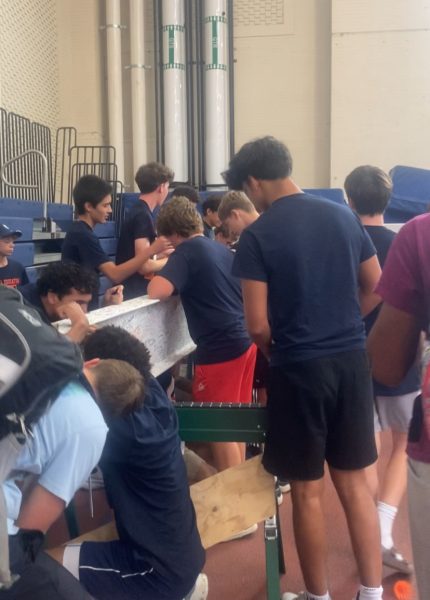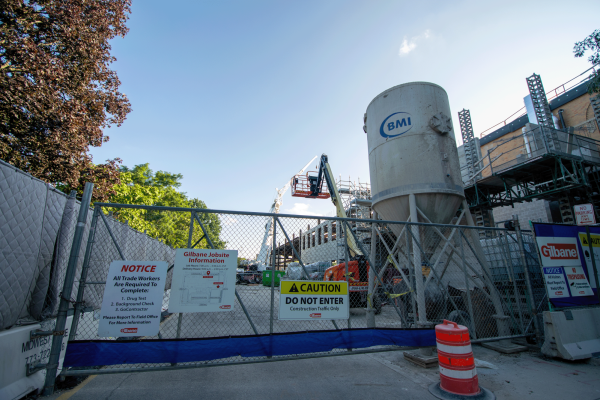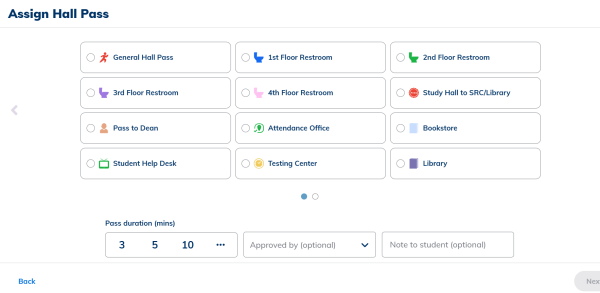OPRF seniors voting 2020
The year 2020 has thrown plenty of obstacles at the American people. The coronavirus pandemic, the verdict on Breonna Taylor and other instances of police brutality and white supremacy, and the passing of Justice Ruth Bader Ginsburg are just a few of the happenings that have created extreme divisiveness among the citizens of America.
With 2020 being an election year, the message among Gen Z is clear: get out and vote, because your vote matters in times like these.
Yet, numbers show boomers are the primary demographic showing up to the polls.
Exit polls in the 2019 Super Tuesday presidential primary showed the voter turnout gap between 18- to 29-year-olds and those over 60 in the United States is more than twice as large as that of comparable democracies like Canada and Germany (The Conversation). Youth voter turnout in the first states to hold primaries and caucuses has ranged from 10 percent in Alabama to 24 percent in Iowa.
Nevertheless, historically blue states have embarked on a crusade to get young voters to the polls, guided by youth voting advocacies. One group working on getting out the 2020 youth vote is the Alliance for Youth Action, the premier vehicle for youth activism in the US. The organization is based in the Pacific Northwest, a region that includes deeply blue states such as Washington, Oregon, and California.
Provided they turn 18 on or before election day, a high schooler has the constitutional right to vote in the United States. This means that some OPRF seniors will be able to vote in four days from the date of this publication.
So, how important is teen voting, exactly? To OPRF senior Emily Maldonado, who will confidently be voting for the democratic candidate, former Vice President Joe Biden, and his running mate, Sen. Kamala Harris (D-Calif.), it is a necessity.
Maldonado said teens voting represents cognizance among our generation and a vision for the future. “We’re at that age where we can understand how the political parties affect us,” she said. “We can make actual change (for) the generations to come.”
Presidential elections give voters in America not only the choice to vote for either of the two major parties candidates (Democratic or Republican), but a voter can also vote for a third-party candidate or write a candidate in. Third-party candidates in this year’s election include Jo Jorgensen of the Libertarian Party and Howie Hawkins, the Green Party candidate.
Even so, third-party candidates have failed to gain viable recognition in American history. The last third-party candidate to win a state was George Wallace of the American Independent Party in 1968, and the last third-party candidate to win more than 5.0 percent of the vote was Ross Perot, who ran as an independent, in 1996.
In the 21st century, however, the race between Democrat and Republican has consistently been so tightly contested that some voters are either voting third-party or not voting at all in protest of the two-party system. In the 2016 election, Green Party candidate Jill Stein and Libertarian Gary Johnson took more than 220,000 votes, or about five percent of the vote, in Michigan (NBC News). A must-win state for the democratic candidate, Secretary Hillary Clinton, these votes were suspected to swing the election in Donald Trump’s favor.
In these critical swing states, senior Meghann Spillane said that voting third-party is essentially “throwing away your vote.” “I do say that in certain states, a vote for a third party is a vote for Trump,” she said. Spillane will also be voting for the Biden/Harris ticket this election day.
Devon Keller, a senior who describes himself as an “independent with more conservative views,” encourages third-party voting. “I think it’s great to vote third party,” he said. “People are treating their political views as a religion. It’s to the point where people won’t even be friends with someone for having different political views.”
Spillane said that the Trump presidency has essentially flipped the republican ticket upside down, contributing to the divisiveness of American political society.
“If you watch past interviews (with) him, he is so inconsistent in his views … the republicans in office did nothing to stop him or stand up to him,” she said. “People react so strongly to Trump because of the outrageous things he says and how ridiculous he is … it is a strategy of him and whoever is behind the scenes.”
Spillane emphasized the scale of the pandemic as proof of the failure of Trump’s presidency. “Everything he’s done has been awful,” she said. “We need a change on a great scale.”
Similarly, Maldonado bases her vote on potential for change. “Biden has a lot more actual ideas that are laid out in action plans … Trump gives empty promises with no real structure,” she said, citing his refusal to condemn white supremacy in the Sept. 29 presidential debate.
As blue as Illinois usually is, many local organizations among high school voters have sprung up to help get Joe Biden in the White House, including Settle for Biden (Instagram handle @settleforbiden), a youth-led movement primarily gathering the support of dejected supporters of candidates who have dropped out of the race. Spillane supported Sen. Elizabeth Warren (D-Mass.) before Biden emerged as the frontrunner.
“Joe Biden wasn’t my first choice … I was a big Warren fan,” Spillane said. “But anyone is better than Donald Trump.”
Spillane, however, was saddened by the low voter turnout among teens in recent elections and thinks that OPRF could do a better job of spreading the word. “Last year, the school had a voter registration drive, but it was kind of lame,” she said. As citizens of OPRF, Spillane believes students could help make voting a bigger part of the community.
“We could use social media … to talk about how easy it is to vote, to talk about our own experiences voting, to talk about different ways of voting,” Spillane said. “I think our generation is so active in politics; so active on social media and in person, but when it comes to actually voting, some of us don’t really believe that (it) matters.”

